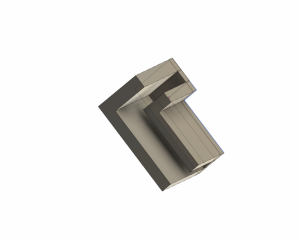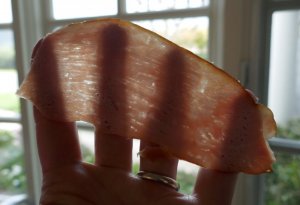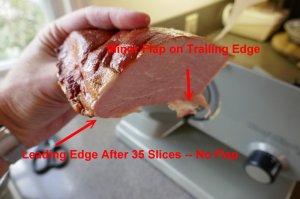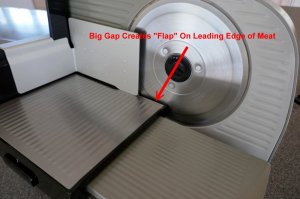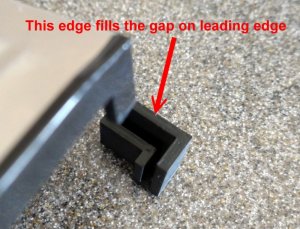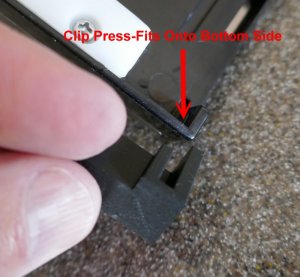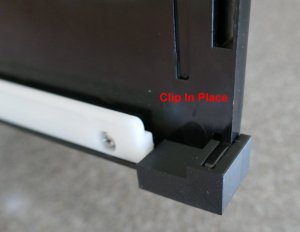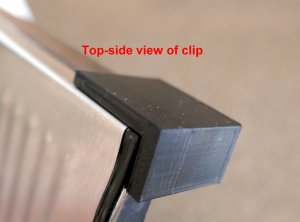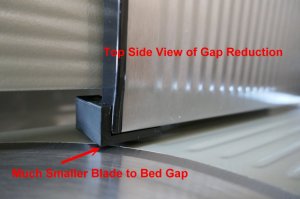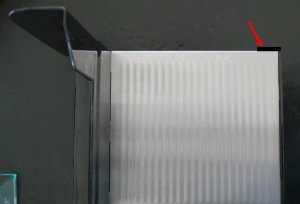[edit] This thread was pulled out and broken off from a similar thread started by Dave Omak after I unintentionally somewhat hijacked his thread. Making this a separate thread was probably a good move by the moderators.
Here is a link to Dave's thread:
Chef's Choice meat slicer modification....
I am adding this introduction to alert any future readers that some of my comments later in this thread may seem a little odd because they were responding to other posts in Dave's thread, and like Dave's initial post, those too were not moved over to this new thread. However, I think you can still follow the idea.
In addition, I have edited this original post from what the moderators copied over from the original thread so that it makes sense on its own. Because this post was initially a response to Dave's post, it makes no sense on its own unless I made these modifications.
[end edit]
I got a 3D printer from my son for Christmas and have been designing all sorts of replacement parts and gadgets. I just pulled out my slicer and it seems to me that I could easily add a clip to the leading edge of the sliding tray that would close up the gap between the moving bed and the blade which is responsible for creating the hanging flap on the leading edge of the meat which, when it gets big enough, interferes with the meat entering the blade at the bottom, resulting in non-uniform slice thickness. Unlike Dave's design, my idea might let me solve the problem without having to cover any of the existing bed, and without making any permanent modifications that cannot be undone. I don't think the part needs to run for the entire length of the bed, because the problem is at the leading edge.
[edit]This was a wrong assumption on my part. I was right that closing the gap only at the front of the moving plate will indeed stop the flap from forming, but only if the meat is long enough so that the leading edge of the meat is over or beyond my part. A more universal solution (discussed below) will be to extend this prototype for the entire length of the tray. [end edit]
I've Photoshopped what it would look like and have attached my proposed design below. There is a ton of space for the clip to fasten to the edge without interfering with the white nylon sliders underneath. It could be removed for cleaning.

I'll post again once I have this designed and printed.
Here is a link to Dave's thread:
Chef's Choice meat slicer modification....
I am adding this introduction to alert any future readers that some of my comments later in this thread may seem a little odd because they were responding to other posts in Dave's thread, and like Dave's initial post, those too were not moved over to this new thread. However, I think you can still follow the idea.
In addition, I have edited this original post from what the moderators copied over from the original thread so that it makes sense on its own. Because this post was initially a response to Dave's post, it makes no sense on its own unless I made these modifications.
[end edit]
I got a 3D printer from my son for Christmas and have been designing all sorts of replacement parts and gadgets. I just pulled out my slicer and it seems to me that I could easily add a clip to the leading edge of the sliding tray that would close up the gap between the moving bed and the blade which is responsible for creating the hanging flap on the leading edge of the meat which, when it gets big enough, interferes with the meat entering the blade at the bottom, resulting in non-uniform slice thickness. Unlike Dave's design, my idea might let me solve the problem without having to cover any of the existing bed, and without making any permanent modifications that cannot be undone. I don't think the part needs to run for the entire length of the bed, because the problem is at the leading edge.
[edit]This was a wrong assumption on my part. I was right that closing the gap only at the front of the moving plate will indeed stop the flap from forming, but only if the meat is long enough so that the leading edge of the meat is over or beyond my part. A more universal solution (discussed below) will be to extend this prototype for the entire length of the tray. [end edit]
I've Photoshopped what it would look like and have attached my proposed design below. There is a ton of space for the clip to fasten to the edge without interfering with the white nylon sliders underneath. It could be removed for cleaning.
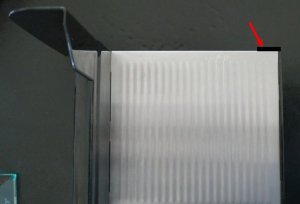
I'll post again once I have this designed and printed.
Last edited:


